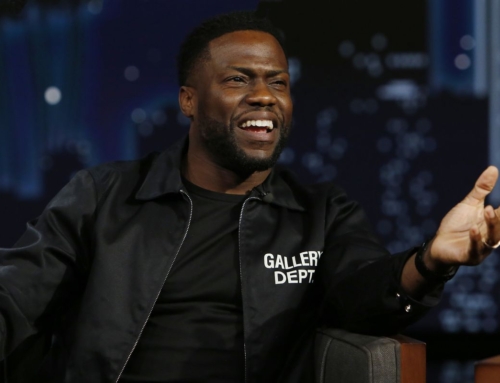The start of each year often means one thing: Publications saying that “this year” will surely be the end of EDM.
Instead, with 2015, the trends point less to obliteration of four-to-the-floor beats and huge synth chords coupled with high-pitched vocals. Instead, the end of 2014 and early signs this year reveal a greater expansion, particularly in the U.S. In short, what has dominated festivals and large clubs is being diversified.
Want proof? Consider the following points:
1. EDM at the Grammys
If you’re a dance music fan, reading the Grammys’ nominations is always great for a laugh. The long-running American awards ceremony can’t ever seem to get it right.
15 years ago, we saw a dance music category get awarded to the Baha Men, and the few years after, nominations went to pop stars. The mid- to late-‘00s started to look up, with New Order, Goldfrapp, The Chemical Brothers, and Kylie Minogue getting nods, but whoever selects the artists seems behind the times. Yes, “Guilt Is a Useless Emotion” was a great synthpop single in the late aughts, but how could anyone miss electro house or trance?
2015’s ceremony had its moments. Nominations finally reflect a greater range of relevant performers: Basement Jaxx, Disclosure, Duke Dumont, Zhu, Aphex Twin, Deadmau5, Mat Zo, Audien, and Kaskade, to name a few. Yet, the results were disappointing. Best Dance Recording went to Clean Bandit’s “Rather Be” – are light four-to-the-floor beats and some synth strings all it takes for a track to be considered “dance” these days?
As well, Tiesto won for his remix of John Legend’s “All of Me” in the Best Remixed Recording, Non-Classical – great, if it were 2005. Where were the Grammys when Tiesto released “Adagio for Strings,” an easily superior track?
2. Commercialism’s an Uncertain Thing
SFX Entertainment’s Robert F.X. Sillerman took his company public at the end of 2013, and according to Forbes, his stock’s shares have plummeted more than 70 percent.
Sillerman now wants to go private with SFX, all while the company continues to gobble up dance music festivals and has a partnership with T-Mobile planned. Yet, behaving poorly in meetings and underestimating shares point to the notion that Sillerman still can’t see a clear future with his company.
As a contrast to this, the latest Super Bowl managed to incorporate a wider array of EDM styles within its commercials. By this point, you’ve likely heard the tracks YourEDM points out: A-Trak and Milo & Otis’ “Out the Speakers,” Steve Aoki’s “Boneless,” Bassnectar’s “Now,” DJ Snake’s “Turn Down for What,” and Avicii remixing Coldplay. Granted, there will be some who will complain, “That’s not real dance music. It’s way too mainstream!” but can you think of another time when you heard that degree of dance music in U.S. commercials?
3. Listeners Are Growing Up
Dance music purists have claimed the Millennials enthralled by EDM would eventually expand their palates and turn toward the underground for something different and more authentic.
Perhaps that’s happened a bit, but simultaneously, what’s being considered mainstream dance music has gone beyond the clichéd build-drop-build-drop structure. Listeners still go after it – you can hear it in any Beatport 100 Dirty Dutch track – but shifts indicate they crave something more.
NPR pointed this out by stating dance music is becoming more of an easy-listening style. Poor choice of a concept and headline, yes, but the article has a point: At least over here, the aggressive character dominating festivals is being swiped out with something lighter.
That direction, on the other hand, seems to branch out along multiple paths. On one hand, some producers, like Calvin Harris and Avicii, have turned purely pop, collaborating with Ellie Goulding and Robbie Williams, respectively. The synths shimmer, there are some builds, but drops aren’t hitting the listener over the head again and again.
Another is the emergence of deep house. Say what you want about performers like Oliver Heldens, Gorgon City, Tchami, and the rest, but the softer, more minimal, and organic character marks a slower change of pace. Listeners and concert-goers aren’t looking to rage; instead, it’s time to feel the groove.
As a contrast to this, the Ultra Music Festival is looking to crack down on drug use, and that’s involved a change in policies. The festival should skew older – no one under 18 is admitted – and plans to have a zero-tolerance policy toward drug usage. How that plan will be executed, especially considering Ultra’s massive and growing size, has yet to be seen.
Yet, Ultra’s decision comes after a year of criticism against festival and concert culture involving dance music. Last year, we saw venues consider banning the genre, all while deaths and hospitalizations related to MDMA continue to be an issue. Coupled with the Resistance Stage catering to an underground audience, could such a change mean that the prototypical American dance music festival is deciding to chill out and mature?
Dance music’s popularity doesn’t seem to be going anywhere – for now, at least. But with mainstream music poised to evolve yet again, what do you think will happen this year? Has EDM bit the dust, or are we on the edge of something completely different?





